How many ounces are in a cup again? If you’re talking dry ounces, it depends. For liquid measurements, here are some quick conversions:
- 4 cups = 32 fluid ounces = 1 quart
- 2 cups = 16 fluid ounces = 1 pint
- 1 cup = 8 fluid ounces
- ½ cup = 4 fluid ounces
- ¼ cup = 2 fluid ounces
We can memorize a lot of things — our best friend’s questionable dating history in perfect chronological order, lyrics to Justin Bieber songs we don’t even like, the correct spelling of Daenerys Targaryen.
And yet, every time we stumble across an unexpected unit of measurement in a recipe — like butter measured in cups, or grams, or flour measured in ounces — our brain pulls a 404.
Nothing can throw a wrench into a great recipe like trying to remember how to conversions. So we’ve compiled a liquid measurement chart and a dry measurement chart with all the conversions you could possibly need.
Print them out and post them on your fridge so you can stop asking Alexa — she’s busy plotting world domination and doesn’t have time to convert milliliters to ounces.
How to Take Liquid Measurements Correctly
The best way to measure liquid is using a liquid measuring cup set on a flat surface. (If you don’t own one, you should.) It’s a glass or clear plastic container, with cups and ounces marked off on the side.
Within the container, the fluid levels itself (hooray science!) so just fill it until the liquid reaches the correct line, and you’re good to go. No need to look on the side to see where the bottom of the meniscus is. I mean, you can, but you don’t have to.
How Many Fluid Ounces Are in One Cup?
Short answer: 1 cup of liquid converts to 8 fluid ounces. However, fluid ounces measure volume, not weight. Just keep in mind that not all liquids weigh the same — most oils are lighter than water.
So whether you’re measuring water, broth, or vodka — hey, we’re not here to judge what you put in your matzo ball soup — 8 fluid ounces will take up the same amount of physical space as one cup of dry ingredients. They won’t, however, weigh the same.
Then, on top of that, there’s of course trying to remember how many cups are in a quart? Or how many quarts in a gallon. That’s why we created the conversion chart below.
Note: U.S. cups have different measurements than UK cups. This conversion chart uses U.S. cups.
Common Liquid Measurement Conversion Charts
Convert Cups to Fluid Ounces, Milliliters, Teaspoons, or Tablespoons
| Cups | Fluid Ounces | Milliliters | Teaspoons | Tablespoons |
| 1/16 cup | .5 fl oz | 15 ml | 3 teaspoons | 1 tablespoon |
| 1/8 cup | 1 fl oz | 30 ml | 6 teaspoons | 2 tablespoons |
| 1/4 cup | 2 fl oz | 59 ml | 12 teaspoons | 4 tablespoons |
| 1/3 cup | 2 1/3 fl oz | 79 ml | 16 teaspoons | 5 1/3 tablespoons |
| 1/2 cup | 4 fl oz | 118 ml | 24 teaspoons | 8 tablespoons |
| 1 cup | 8 fl oz | 237 ml | 48 teaspoons | 16 tablespoons |
| 2 cups | 16 fl oz | 473 ml | 96 teaspoons | 32 tablespoons |
Convert Metric to Imperial Measurements (Cups, Fluid Ounces, Milliliters, Pints, Quarts, Gallons)
| Cups | Fluid Ounces | Milliliters | Pints | Quarts | Gallons |
| 1/2 cup | 4 fl oz | 118 ml | 1/4 pint | ||
| 1 cup | 8 fl oz | 237 ml | 1/2 pint | ||
| 2 cups | 16 fl oz | 473 ml | 1 pint | 1/2 quart | 1/8 gallon |
| 4 cups | 32 fl oz | 946 ml | 2 pints | 1 quart | 1/4 gallon |
| 8 cups | 64 fl oz | 1.89 liters | 4 pints | 2 quarts | 1/2 gallon |
| 16 cups | 128 fl oz | 3.78 liters | 8 pints | 4 quarts | 1 gallon |
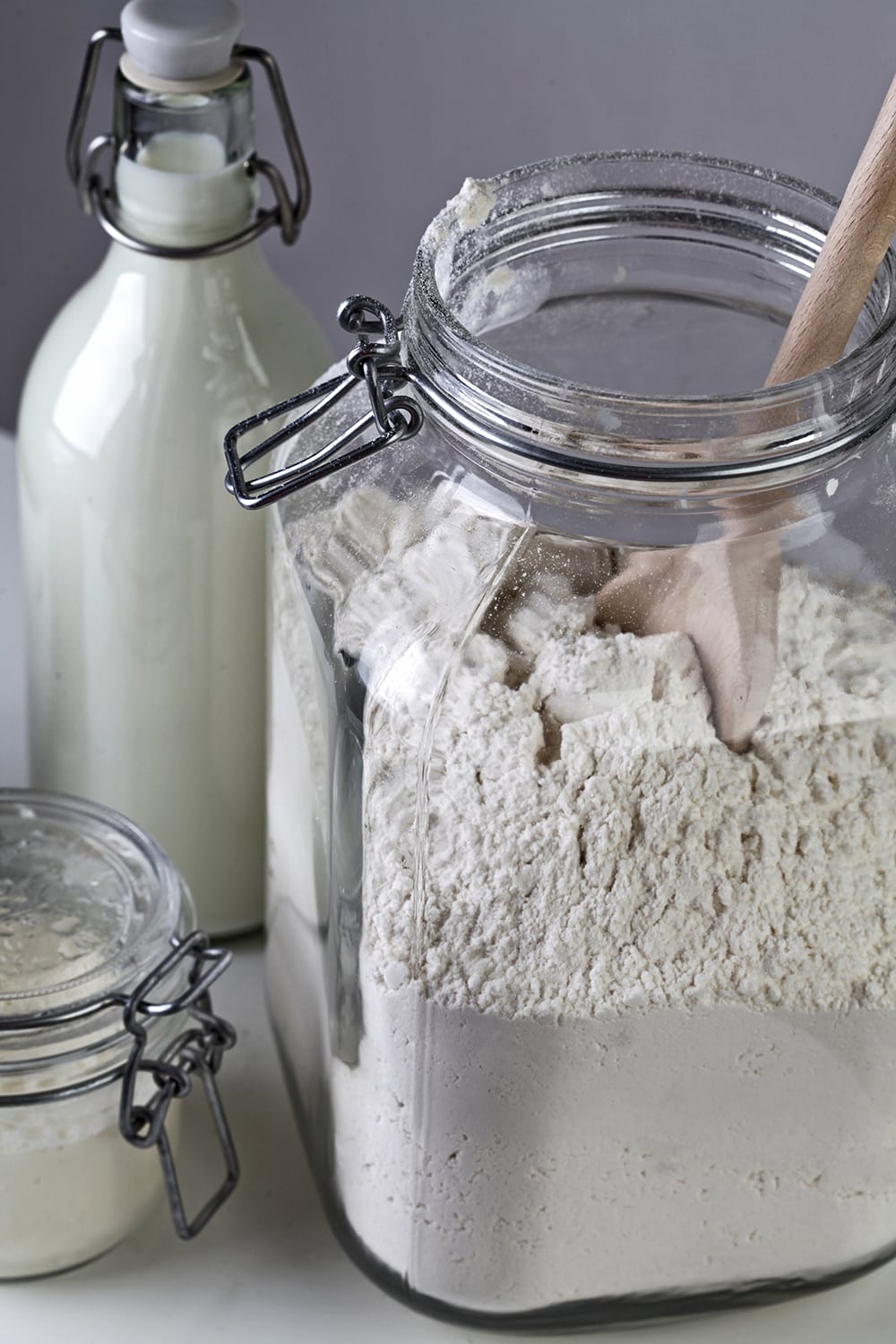
How to Take Dry Measurements
When you’re measuring dry ingredients, ounces are a measurement of weight. That’s why you’ll usually see dry ingredients measured in cups, tablespoons, or teaspoons — not ounces.
The answer to “how many ounces in a cup” can vary pretty drastically when you’re dealing with flour and sugar. (A cup of flour weighs around 4.5 ounces, while a cup of sugar weighs about 7 ounces.)
Dry measurements are a little more complicated. They’re right up there with “making friends as an adult.”
If a recipe calls for 8 ounces of flour, that means the recipe creator wants you to use a very specific amount of flour and that you should measure this by weight. To do so you’ll need to use a food scale to get it just right. We like this one.
The best way to measure light dry ingredients – like flour – is by scooping it into a measuring cup and then gently leveling off the top with the dull edge of a butter knife or other flat utensil.
To measure most heavier ingredients, like sugar, it’s ok to dip the measuring cup or measuring spoon into the ingredient and then level off with a flat utensil.
If you don’t have a full set of measuring cups, or your only tablespoon is lost in the junk drawer somewhere, the dry conversion chart below will come in handy.
Common Dry Measurement Conversion Chart
| Teaspoons | Tablespoons | Cups |
| 3 teaspoons | 1 tablespoon | 1/16 cup |
| 6 teaspoons | 2 tablespoons | 1/8 cup |
| 12 teaspoons | 4 tablespoons | 1/4 cup |
| 16 teaspoons | 5 1/3 tablespoons | 1/3 cup |
| 24 teaspoons | 8 tablespoons | 1/2 cup |
| 48 teaspoons | 16 tablespoons | 1 cup |
| 96 teaspoons | 32 tablespoons | 2 cups |
Does It Really Matter Which Type of Measuring Cup You Use?
Ideally, you should use a liquid measuring cup for liquid ingredients and a set of measuring cups or measuring spoons for dry ingredients.
But in a pinch, can you measure dry ingredients in a liquid measuring cup, or vice versa? Yes — but it’ll be annoying.
For instance, if you try to measure flour in a liquid measuring cup, you might accidentally pack down some of the flour while you’re trying to level it off or scoop out too much.
Liquid ingredients are a bit more forgiving — you can’t fluff them up or pack them down. But to measure liquid ingredients in a dry measuring cup, you’ll need to fill it to the top, and that means you’re more likely to spill.
We hope you now have the confidence to do all the liquid and dry conversions you need to prep your recipe with the kind of precision that would make Walter White proud, if only he’d decided to go into the patisserie business instead. (Seriously, you know he would’ve made a mean macaron.)
- The New Season of Schitt’s Creek Is Here and No That’s Not Just Another Name for America Right Now - October 6, 2020
- These 19 Christmas Party Ideas Are Tacky AF and We Want Them All - November 28, 2019
- WTF is Maracuja? - April 4, 2019
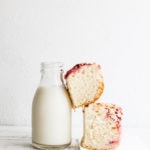
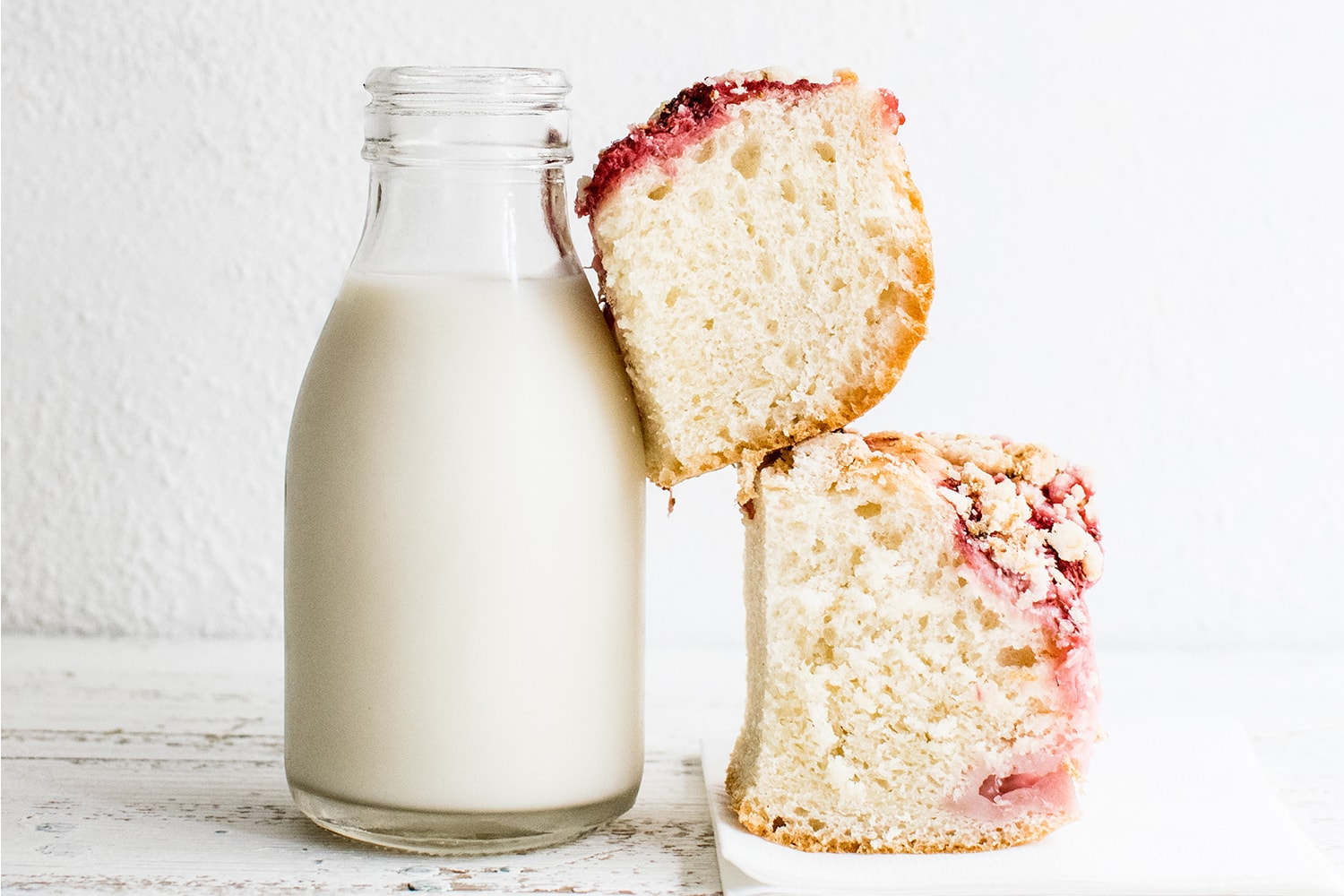
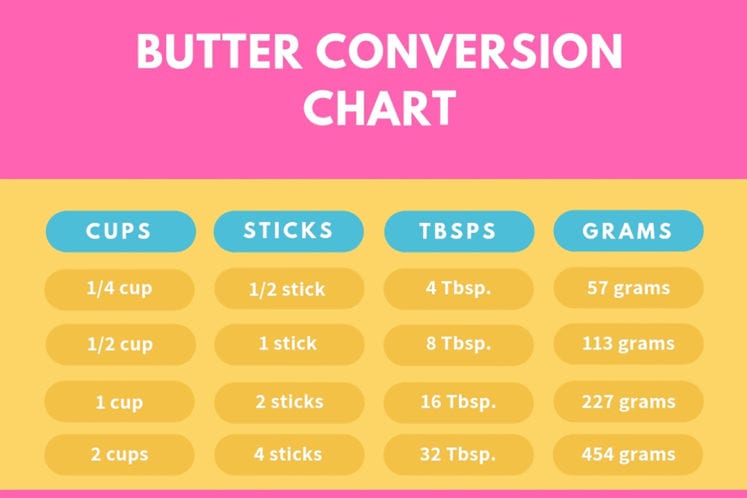
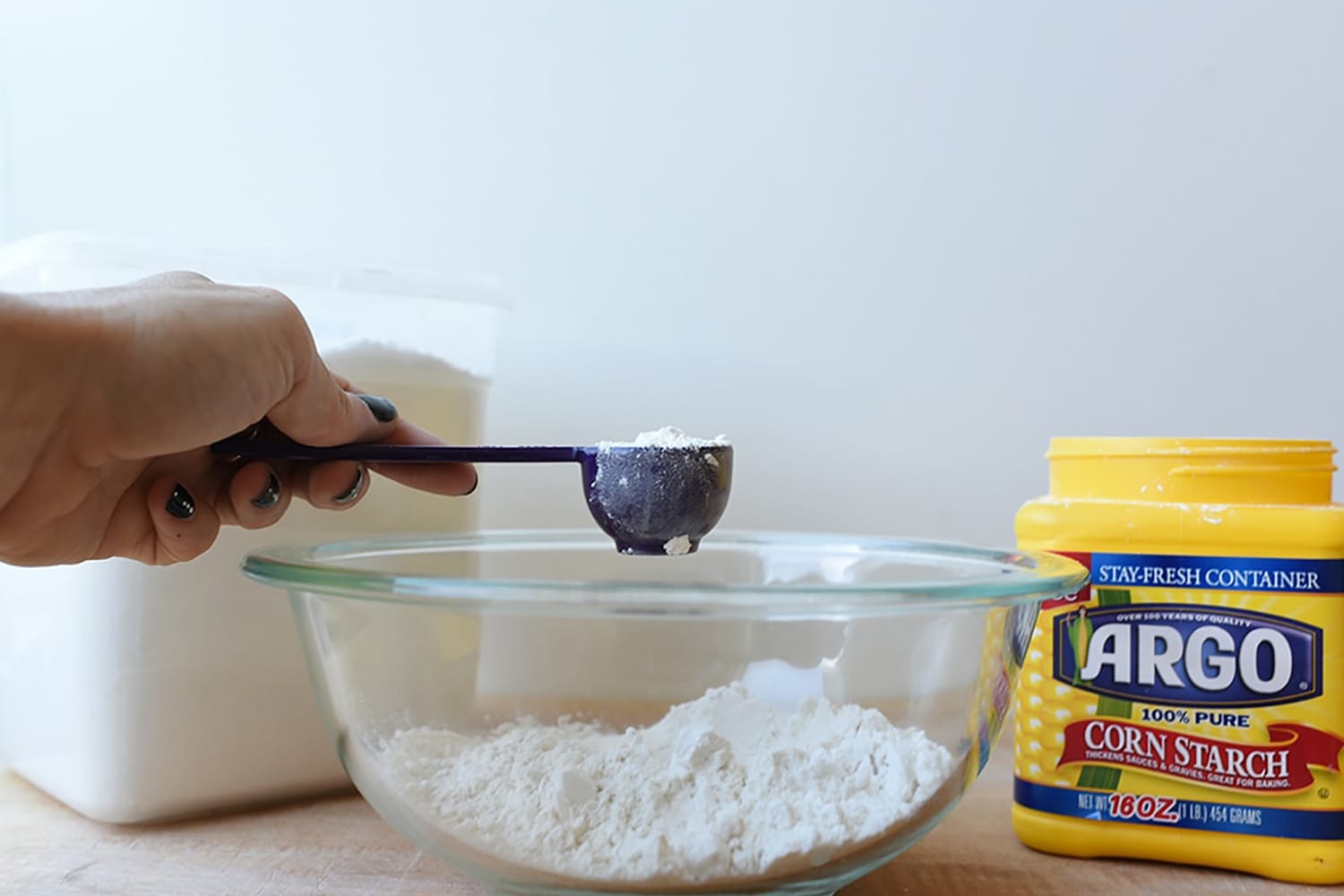
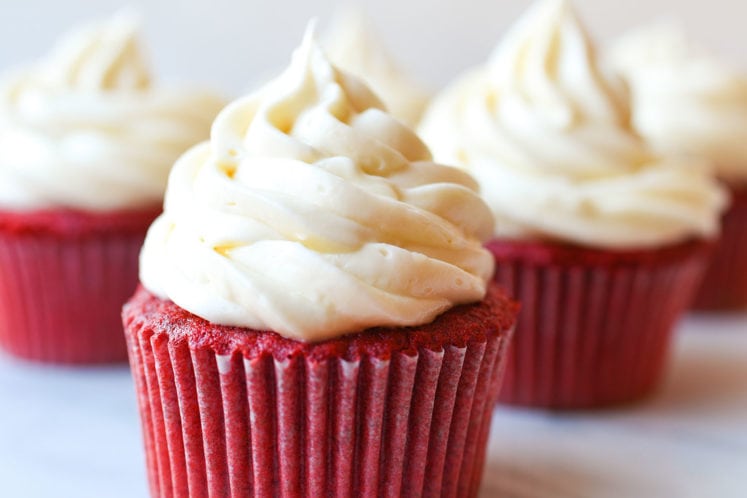
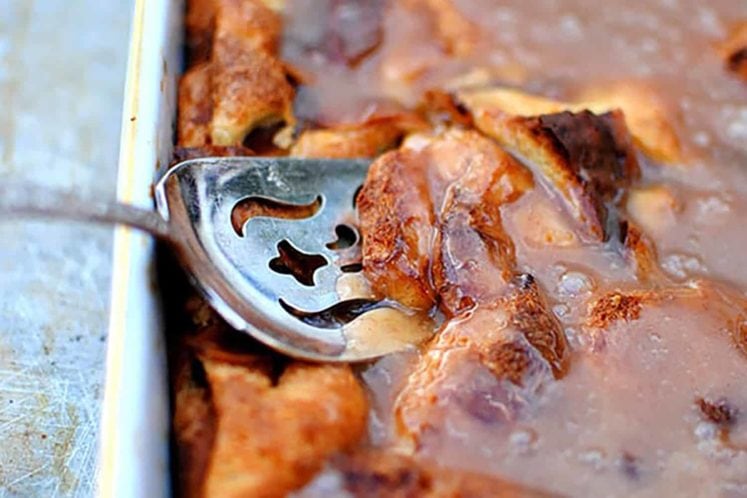
Leave a Comment